Steve Huffman Shares 5 Secrets For Success

Recently on BBC News video, Reddit CEO Steve Huffman shared 5 secrets for success:
1. Take time to sleep, take time to think and don’t reply to every email.
2. If I could go back and tell myself one thing, it’s basically that the job is all about time and stress management more than anything else, and that is something you’re in complete control over.
3. You don’t have to answer every email, your first priority is to your business and to yourself.
4. If you’re not sleeping you can’t make decisions, you can’t handle stress, you won’t be able to think clearly, and setting aside time to actually think about the future is really valuable.
5. Sleep deprivation also leaves people in a state in which they are more reactive to stress. They are more likely to be stressed out about things that might not otherwise be seen as a big deal, and more likely to have negative emotional responses to events they encounter.
NOTE: Sleep disruption is one of the most important migraine and headache triggers
The Perfect Plank
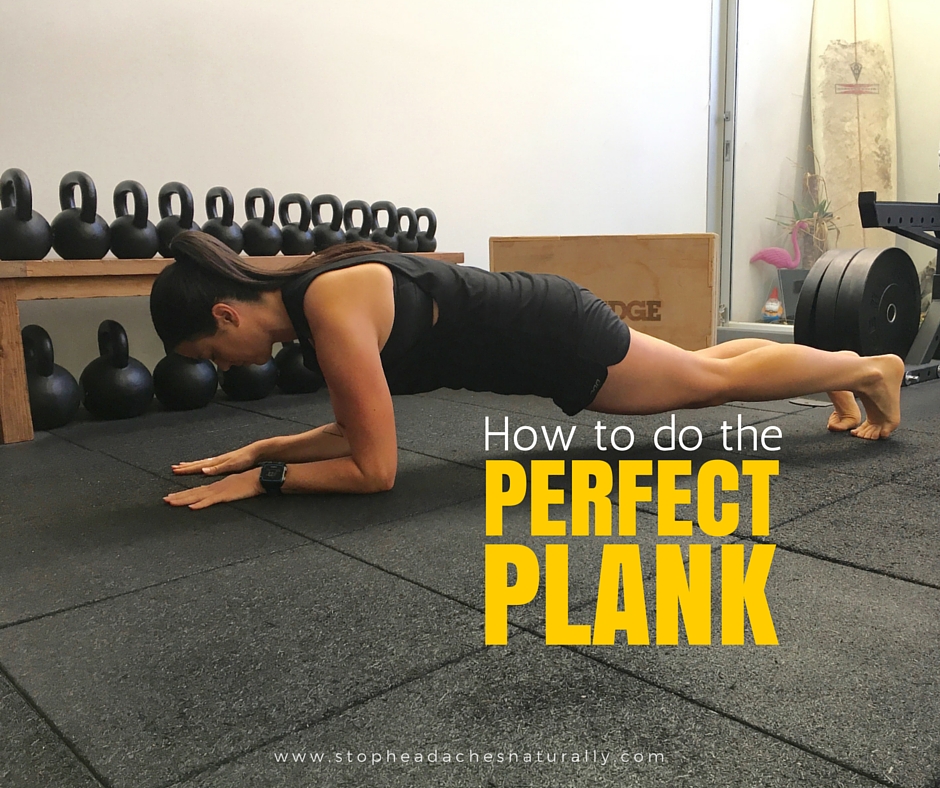
When performing the plank it is important to use the correct technique. This will allow you to get the most out of the exercise and reduce the risk of injury.
That is why I contacted Amber Johnson - Founder, Owner and Strength & Conditioning Coach at First Wave Fitness and asked her, "How do you perform the perfect plank?" Here is Ambers' response…
The plank is a brilliant exercise to learn to create and maintain tension throughout the core in a neutral spine position.
Here is how to set up your plank:
1. Setting up on your elbows, feet together, knees locked out straight and your weight evenly distributed throughout your body
2. Align elbows directly underneath your shoulders with forearms parallel, hands relaxed, palms facing down
3. From here, we want to pack our shoulders down into our ribcage and away from your ears. Without moving your forearms, imagine pulling them backwards along the floor to lock your upper body and pelvis together as one unit
4. To align your spine in a neutral position, find the best position where you can squeeze your glutes
5. Your head and neck should also be kept in a neutral position (you may wish to place a broomstick down your back to ensure correct alignment is maintained. With the stick making contact at the back of your head, upper back and glutes).
Engage your core by gently drawing the belly button in and exhaling slowly to hold a strong tension through the middle of your body. From here, take slow, small breathes in and gently exhale to maintain this tension.
When attempting the plank, you should always aim for quality over quantity. When you first set out, run through your mental checklist of form cues and aim for short intervals.
"Always aim for quality over quantity"
Initially you may wish to start with 10 seconds holds and 10 seconds rest to reset and come up again. Try to work towards 6x 10 seconds holds and gradually build the working interval as you feel more confident with your form.
Once you have conquered the 6x 10 seconds hold, a good goal is to build towards a 30 seconds quality hold. As you advance, aim for quality holds between 30-60 seconds, and eventually 60 seconds-2 minute holds.
For those who are looking to advance the plank from here and challenge their Cross Core Sling Systems try the following:
Single Arm Holds
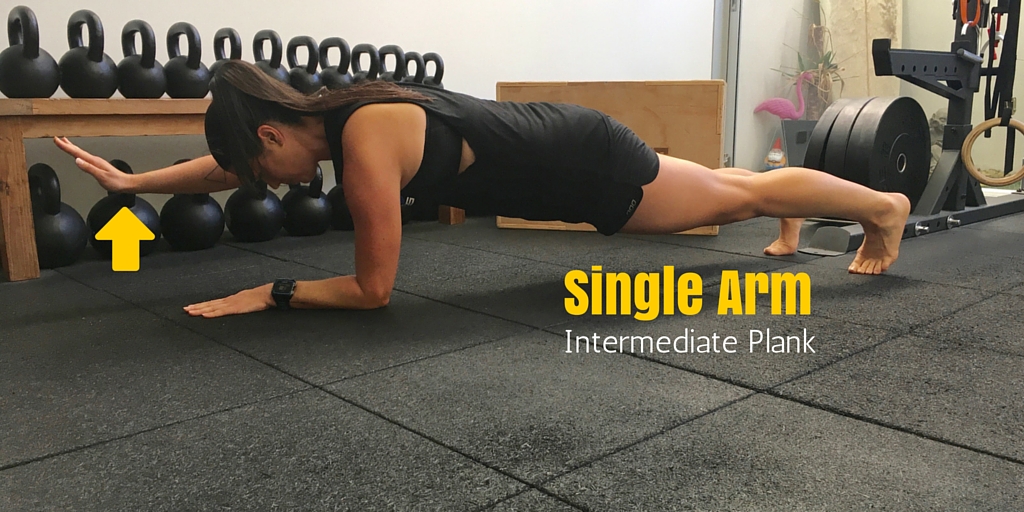
Single Leg Holds
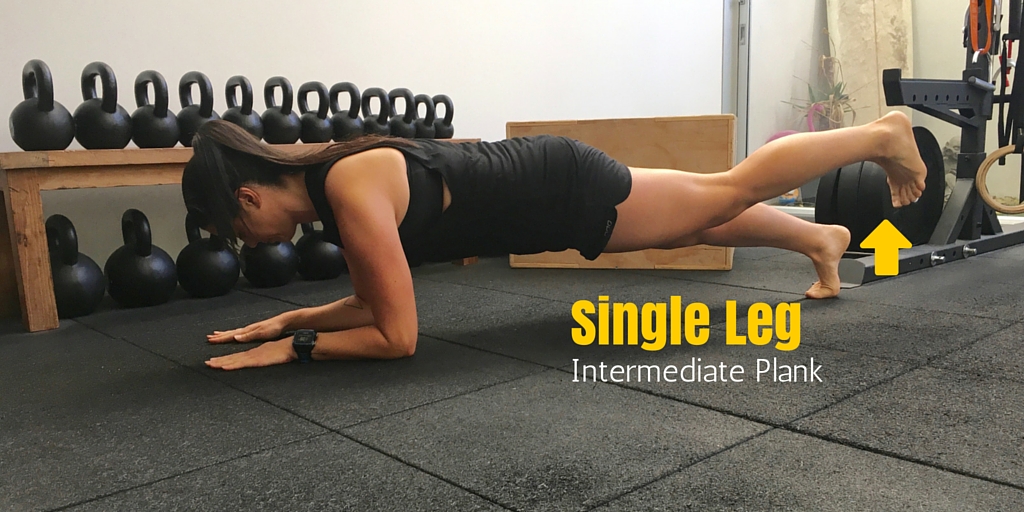
And the real challenge the…
Single Arm and Opposite Leg Hold
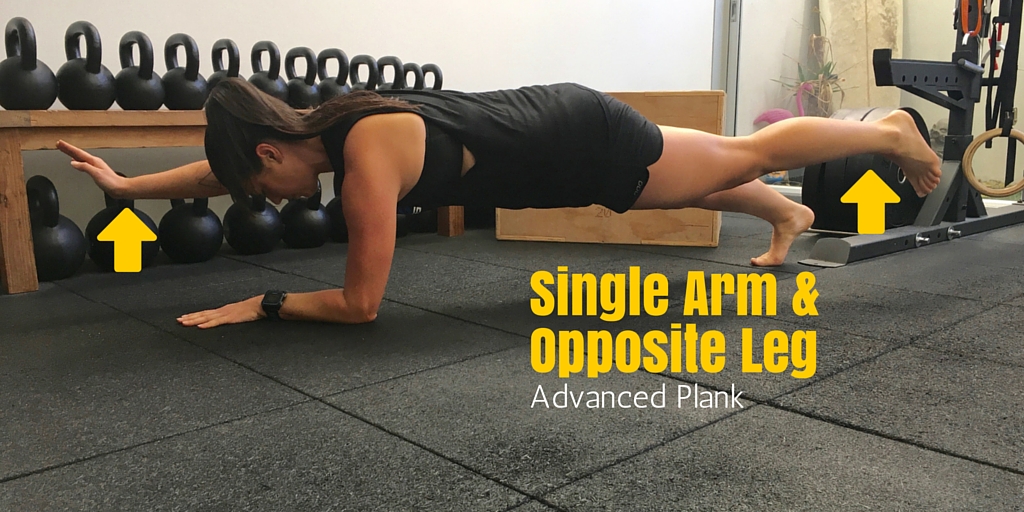
Look to progress these in the same fashion as the plank, small intervals of quality over duration. As you build in strength, build the working intervals into longer holds.
_________________________________
Amber Johnson has been working in the fitness industry now for close to 10 years. Originating from a strength and conditioning background, Amber now regularly trains for and participates in the long course and Ironman triathlon series.
After completing further studies in rehabilitation, functional movement and postural correction, Amber works with a suite of athletes both local and professional, to educate, identify and retrain imbalances in the body’s movement patterns to help them move more efficiently and effectively.
Amber’s training philosophy is about building a solid foundation of strength and stability for her athletes to maintain optimum posture across each discipline allowing the body to perform at its full potential which can be summed up in her favourite quote: “First move well, and then move often” – Gray Cook
Health Benefits Of Planking

People who spend more than 5 hours sitting each day need to do planks. Why?
Because sitting for long hours at a time weaken your core muscles which are crucial for providing support for you back and spinal column.
The weaker your core, the more prone to injuries you will be. And planks are especially helpful in countering the detrimental effects of sitting.
In addition, doing plank exercises every day will also give you other health benefits you may not have thought about:
1. Boost Overall Metabolism
2. Improve Core Performance
3. Decreased Risk of Injury To The Back & Spine
4. More Flexibility
5. Improved Posture
6. Improved Balance
7. Mental Health Benefits
It’s worth reading this article by DailyHealthPost in more detail, especially if you suffer with headaches and migraines… strengthening and stretching are two keys to overcome your pain.
Let Food Be Thy Medicine

Hippocrates was a Greek physician who made such an impression on medical history that today he is called the father of modern medicine - some graduating medical students take the “Hippocratic Oath’ upon receiving their doctoral degree.
Even though Hippocrates did most of his work around 400 years before the birth of Christ, we can still learn a lot from his detailed observations of disease and its effects, and how health is often influenced by diet.
It’s a shame that many doctors prescribe medication without considering the benefits of a healthy diet.
The Mind-Body Connection
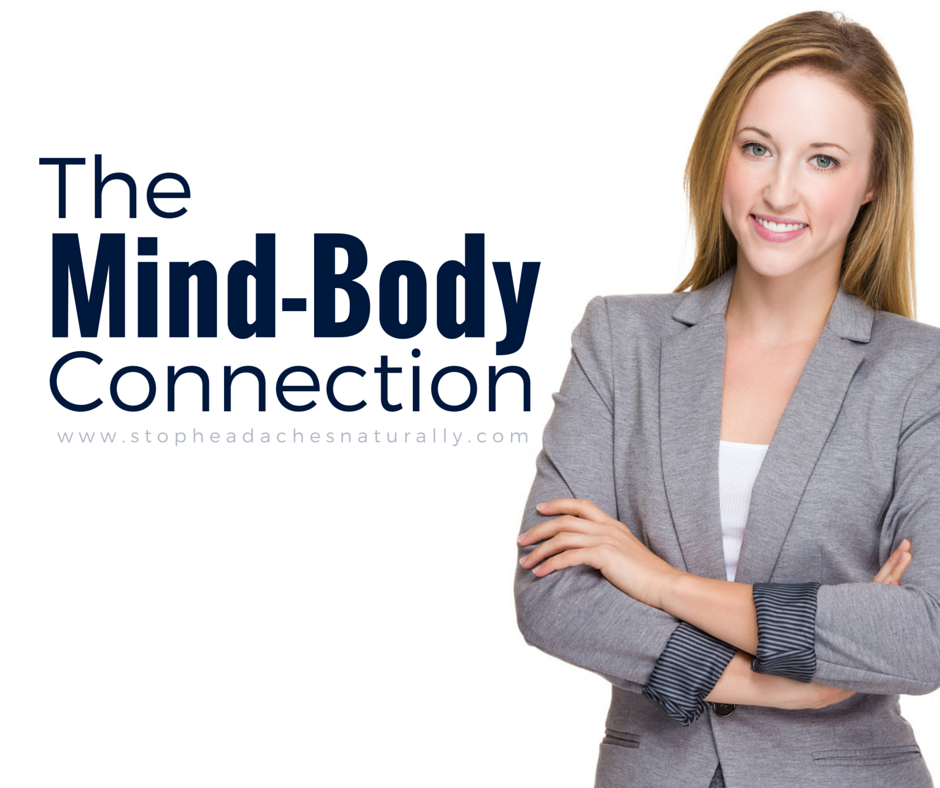
Your body position, posture, gestures and facial expressions can actually influence how you think, feel and even behave.
Read this interesting article from Berkley Wellness and find out more about the 4 Mood-Changing Poses:
1. Cross your arms to increase perseverance
2. Increase willpower by tensing your muscles
3. Smile to improve your mood
4. Assume a balanced position to be more levelheaded when shopping
N.B. cultural differences will influence the effect
Exercise - Is More Better?
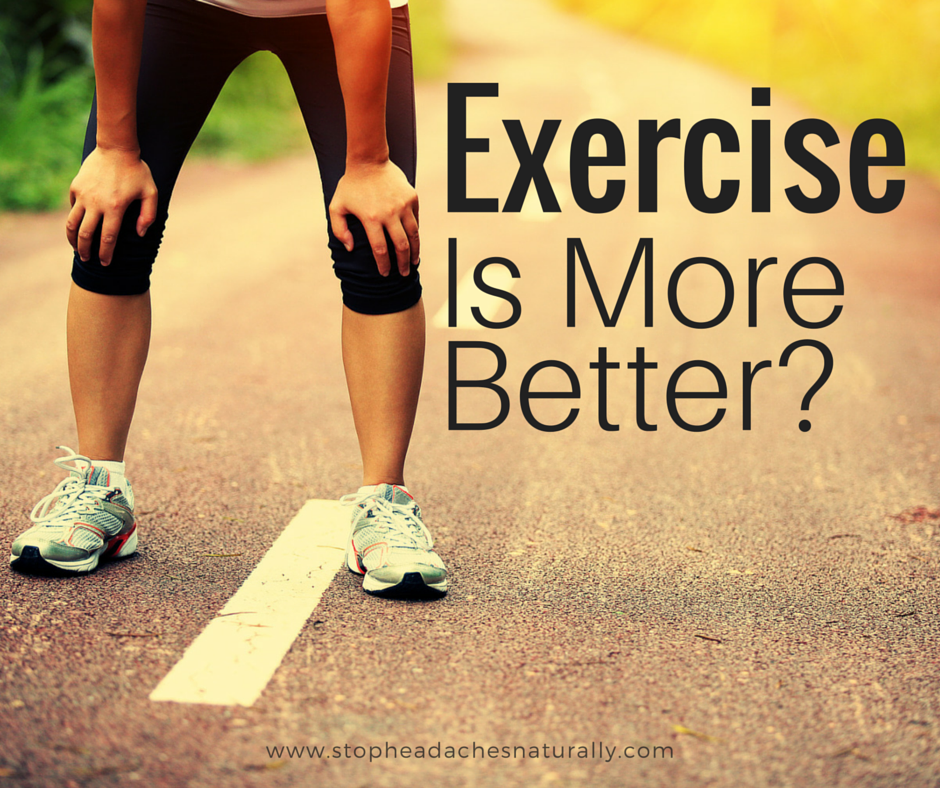
A new study published in Current Biology found that people who exercise a lot don’t burn extra calories for their efforts beyond a certain point.
Now that doesn’t mean you stop exercising but it does shed some light on the misconception that more is better.
Read this interesting WebMD Heath News article and find out:
- What did the study find?
- The role of exercise in weight loss
- Why is it that more exercise is not better?
- Do we hit a kind of plateau?
- How do you find your ’sweet spot’?
- What’s the best take-home advice from this research?
Preventative Medicine - Drink Water... But How Much?

Studies on hydration status normally focus on water balance over a 24 hour period. For water balance to be maintained, water intake must equal water losses. So how much water or other fluids will be required for this?
It is difficult to make universal recommendations. People vary widely in their water needs depending on many different factors. These include age, gender, body size and composition, health, level of physical activity, and the temperature and humidity their environment. Even working in a dry air conditioned office can lead to increased water losses that we are not aware of.
"Conflicting points of view on how much fluid (including water) you should drink per day to stay well hydrated"
There are two conflicting points of view on how much fluid (including water) you should drink per day to stay well hydrated and government health agencies and other health authorities have changed their advice over the years.
One view is “to let thirst be your guide”. This is based on defining mild dehydration as starting at 3% loss of body weight. [1] It may work for who those sweat a lot, like athletes or those doing physical activity in hot climates. But it doesn’t seem to work so well for the average person going about their everyday activities, where water loss is smaller and more gradual.
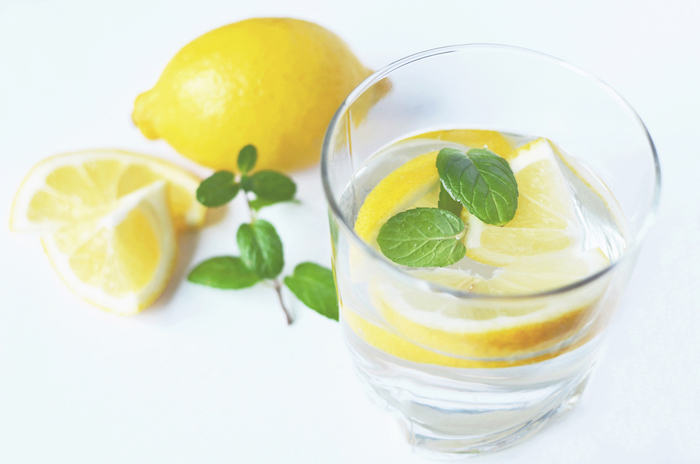
Part of the problem is that humans do not sense thirst until they have lost 1% to 2% of their body mass as water. [2] By that stage, you are already mildly dehydrated. Water has been transferred from within and between the cells of your body and into your blood-stream. In addition, some people get used to ignoring thirst signals. In others, such as the elderly, the thirst mechanism is less effective.
However the brain is 80% water. Recent research has shown that a loss of just 1.6% of body mass impaired cognitive performance and mood in healthy young men. [3] It seems reasonable to assume that a similar minor water loss can trigger a headache attack.
The alternative view on maintaining hydration status is to offer specific guidelines for an “average” non-exercising person in a temperate climate.
It is commonly assumed that about 20% of our water intake comes from food. [4] That leaves about 1700 ml to be made up by water and other beverages. It fits reasonably well with what in the US is referred to as the 8 x 8 rule – in other words drink a total of eight 8 oz glasses per day, which comes to a bit less than 2 litres.
"About 20% of our water intake comes from food. That leaves about 1.7 litres to be made up by water and other beverages"
However what is generally not emphasised by the need to spread fluid intake out evenly throughout the day. It takes time for water to be absorbed from the gut, enter the blood-stream and rehydrate the cells.
Drink too much too quickly and a lot of it will pass straight through. It can also be dangerous under some circumstances, especially when a lot of salts have been lost in sweat and these are not replaced at the same time.
What about drinks containing caffeine, like coffee, tea and some soft drinks, which have a mild diuretic effect?
Water balance studies show that these don’t cause dehydration over a 24 hour period, at least for those used to caffeine. However it is possible that increased urination could lead to temporary water losses from within brain cells and trigger a headache attack. If these losses are later made good they won’t be detected.
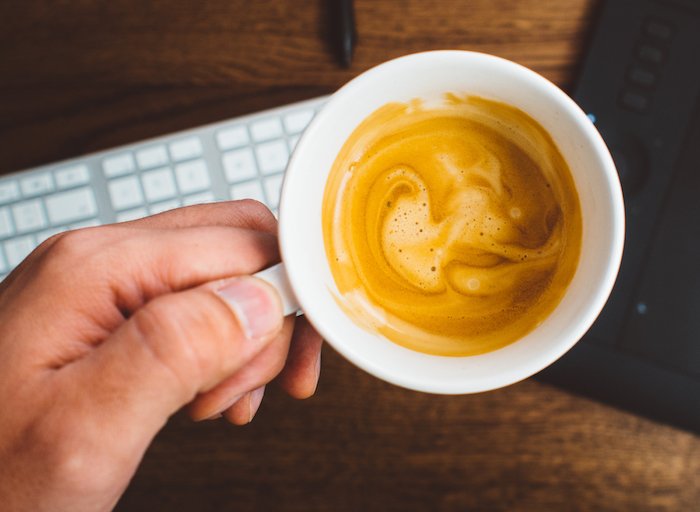
In any case headache sufferers need to be cautious about their caffeine intake to avoid headaches triggered by caffeine withdrawal.
Water is certainly a much better choice than sugary commercial fruit juices or soft drinks which can cause your blood glucose levels to spike. These drinks,[5] and even diet soft drinks, [6] have also been linked to progressively putting on body fat over time.
"We suggest you aim to drink roughly 1.5 litres of water evenly spread out over the whole day, and 20% derived from your diet, it will provide a total fluid intake of about 2 litres"
In the absence of any better evidence, we suggest you aim to drink roughly 1.5 litres of water evenly spread out over the whole day, giving a total fluid intake of about 2 litres.
Even if you don’t like water, this is an achievable target, provided you gradually replace some of your other beverages by water.
You could also try filtering tap water (this is a lot cheaper than bottled water) and adding a slice of lemon.
[1] H Valtin (2002). “Drink at least eight glasses of water a day.” Really? Is there scientific evidence for “8 x 8”?” Am J Physiol Regul Integr Comp Physiol, 283(5): R993 –R1004.
[2] LE Armstrong (2012). “Hydration Biomarkers During Daily Life: Recent Advances and Future Potential.” Nutrition Today, 47(4): Supplement 1: S3 - S6.
[3] MS Ganio, LE Armstrong, DJ Casa, BP McDermott, EC Lee, LM Yamamoto, S Marzano, RM Lopez, L Jimenez, L Le Bellego, E Chevillotte and HR Lieberman (2011). “Mild dehydration impairs cognitive performance and mood of men”. Br J Nutr, 106(10): 1535-1543.
[4] E Perrier, S Vergne, A Klein, M Poupin, P Rondeau, L Le Bellego, LE Armstrong, F Lang, J Stookey and I Tack (2013). “Hydration biomarkers in free-living adults with different levels of habitual fluid consumption”. Br J Nutr; 109(9): 1678–1687.
[5] VS Malik, A Pan, WC Willett and FB Hu (2013). “Sugar-sweetened beverages and weight gain in children and adults: a systematic review and meta-analysis”. Am J Clin Nutr; 98(4): 1084-1092.
[6] ML Power and J Schulkin (2013). The Evolution of Obesity, p117-118, JHU Press.
Preventative Medicine... Diaphragmatic Breathing

If you are like most people you probably haven’t given much thought to the way you breathe until now.
However, factors such as stress, slumping in the chair, abdominal surgery, or even always keeping the stomach tensed and hence fashionably flat, mean we tend to adopt incorrect breathing patterns without realising it. Perhaps it may come as a relief to know those much sought after “washboard abs” are not so healthy after all.
Common examples of incorrect breathing include:
● Chest breathing (breathing high into your chest)
● Shallow breathing
● Irregular breathing
● Failing to breathe out fully
● Forgetting to breathe out at all for a while and holding your breath
● Breathing too rapidly or too deeply (hyperventilation)
● Breathing through your mouth rather than your nose
Some people who breathe incorrectly complain they tend to run out of breath while talking, others may notice feeling anxious, but many may not be aware of any effects at all.
"We often worry about what to eat and what not to eat but we can last months without food, but only days without water and only minutes without oxygen"
However correct breathing is essential for optimal physical and emotional well-being. Consider that we often worry about what to eat and what not to eat but we can last months without food, but only days without water and only minutes without oxygen.
Incorrect breathing patterns can have some surprising effects.
In Chapter 7 we mentioned that habitual chest breathing could cause trigger points to develop in the neck and shoulder muscles, and that replacing chest breathing by diaphragmatic breathing plays an important part in preventing these trigger points from recurring in the future.
But what is diaphragmatic breathing?
Diaphragmatic breathing, which is also called abdominal or belly breathing, is considered to be the normal healthy way to breathe. It means drawing air deeply into the lungs while keeping the belly relaxed and using the diaphragm to do most of the work. This causes the abdomen to expand rather than the chest.
Slow diaphragmatic breathing is how a sleeping baby breathes, its abdomen rising and falling with each breath.
It is the most efficient way to breathe, requiring the least physical effort and almost completely filling the lungs with air.
"It also has a calming effect, helping reduce emotional stress and excess muscle tension"
It also has a calming effect, helping reduce emotional stress and excess muscle tension and so is normally used as a prelude to relaxation exercises.
Slow diaphragmatic breathing can make a significant contribution to reducing the frequency and severity of your headache attacks.
It does this by:
● Removing one cause of trigger points in the muscles of the neck and shoulder muscles which are a direct source of headache pain.
● Increasing oxygen supply to the brain.
● Reducing emotional stress and excess muscle tension.
* This is an excerpt from the book Stop Headaches Naturally (Chapter 8, Correct Breathing - Diaphragmatic Breathing & Headache Prevention)
What Is Prentative Medicine?

Have you ever tried fixing a leaky roof when it’s raining? The only thing you can do is place a bucket under the leak and temporarily repair the leak.
Once the rain stops, it’s easy to remove the water from the bucket and hope it doesn’t rain again. But if this cycle continues, the leak that was once only a single drop in a bucket, can worsen to the point were the roof can buckle and cave in.
Many of us can apply this behaviour to our health. It’s important that once we experience a ‘leak’ in our health - whether its back pain, tension headache or migraine - make the time to fix it.
"Once we experience a ‘leak’ in our health - whether its back pain, tension headache or migraine - make the time to fix it"
So don’t wait until it rains again. If the sun is shining and there are blue skies, make sure you make the time to take preventative measures to ensure that your roof contains no cracks or faulty plumbing.
Stay posted! I will be providing some Preventative Medicine strategies in upcoming posts…
Don’t Let Your Thirst Dictate Your Water Intake

Dehydration may seem a mild problem but even at a moderate level it can cause a lot of distress to an otherwise healthy person - if the problem is severe, it can even become life threatening. Our body is about 70% water and any decrease in this level can lead to many uncomfortable ailments including headache and migraines. So if you suffer from such complaints, it is important to keep your body well hydrated.
What is dehydration?
Dehydration is basically a deficiency of water in our body. In order for our body to function optimally, the balance between electrolytes and water needs to remain normal. When this balance is disrupted, we suffer from a number of physical symptoms that are collectively known as dehydration.
Common symptoms of dehydration
Following are a few of the most striking symptoms of dehydration:
• Headache
• Excessive thirst
• Dryness of mouth
• Dry, wrinkled skin with decreased elasticity
• Fatigue and weakness
• Muscle pain
Relation between dehydration and headache
The reason behind this is not clear but some studies have shown that it is due to the constricted blood vessels in the head that are trying to regulate the fluid levels and conserve water. This creates a deficiency of blood supply and therefore oxygen to the brain, creating a headache.
Dehydration can cause headaches and even trigger a migraine attack. The amount of pain may vary from person to person. It can be felt either in the front or back of the head or only on one side. There are some people who feel it throughout the entire head, mimicking a tension headache. A common symptom of a dehydration headache is increased pain with any head movement or walking.
Treating a dehydration headache
In order to treat a dehydration headache, you simply have to drink some water to rehydrate your body. It is best not to drink too fast. Instead, slowly drink 2-4 glasses of water and your headache will subside within a couple of hours. In some cases when you are unable to consume food or if a child is dehydrated, drink fluids that contain electrolytes such as a sports drink.
It is also important to rehydrate without sweating otherwise you will continue to lose fluids. So move to a cool environment or find some shade.
If the problem persists, it is best to consult a doctor who will prescribe I.V. fluids for faster recovery from dehydration.
Preventative measures
Drinking enough water throughout the day is the best way to prevent dehydration headaches. Although 6 - 8 glasses of water (1.5 - 2 litres) is considered ideal, this will vary according to your weight, physical activity and whether you live in a warmer climate or higher altitude.
Many people fall in the trap of never drinking enough water because they never feel thirsty - don’t let your thirst dictate your water intake. It is recommended to drink enough water so your urine is clear and a pale yellow colour.
Refrain from alcohol and excessive caffeine, because they act as a diuretic – leading to dehydration. Fruits and vegetables are great for health and energy but they are not a substitute for drinking water.
Image: spongysponge
________________________
Pablo Tymoszuk is a soft tissue therapist specialising in remedial, myofascial and dry needling techniques. He also acts as an ergonomic specialist and wellness consultant which has motivated him to co-author the eBook Stop Headaches Naturally.
Together with Dr Margaret Scarlett they present a range of strategies for stopping headaches and migraines without drugs. All strategies are organized in a systematic manner and backed up by references to the scientific literature.
Can You Exercise For Just 60 Seconds A Week & Transform Your Health?

There are many people who don't exercise because they believe they need to run or cycle hundreds of kilometres, bench press the weight of a car or have a personal trainer that pushes them to new levels to achieve their fitness goals... but that is not true!
Let me make myself clear, I support the personal training industry but not everyone responds to that sort of training.
I have always questioned excessive exercise due to the negative effects it has on the body. Yes, if you want to be on the front cover of Men's Health Magazine with 10% body fat or compete in next years Tour De France, your body will have to undergo serious training to achieve such feats.
On the other hand if your goal is to control your weight, increase your health and decrease the chances of illness or disease, then do you really need to train 4-6 days of week? All you need is a simple fitness program that develops your strength, flexibility and endurance.
High Intensity Training (HIT) has been used for many years. It is a great way to achieve your fitness goals without excessive exercise, reduce the incidence of overuse injuries and allow you to live a balanced life without the stress of meeting unrealistic fitness goals.
Here is an excerpt from Dr. Michael Mosley's (author of 2:5 Diet) Daily Mail article that explains the importance of exercise and the benefits of High Intensity Training...
"Everyone agrees that getting more active will add years to your life (around 2.2 years, to be exact).
But, more importantly, it will significantly reduce your risk of developing a range of chronic diseases, from cancer to heart failure, dementia to diabetes.
Exercise will also help you sleep better, improve your mood and even perk up your sex life, according to the well-regarded Mayo clinic in the U.S. (even help reduce tension headaches).
But how much should you do? In 2008, a committee of U.S. scientists recommended 150 minutes of moderate exercise a week, while cautioning the necessary amounts 'cannot yet be identified with a high degree of precision'. 'In trials, most people say they prefer HIT to conventional exercise, not least because it is over so quickly'
This 150 minutes a week remains the recommended level despite the fact that less than 20 per cent of us do anything like that. The most common excuse is a lack of time. That has certainly been mine - which is why the idea of HIT appeals to me."
Keep reading this interesting article by Dr. Michael Mosley and you will also find out about:
- Roger Bannister Was A 'Fast' Exerciser
- You'll Want To Eat Fewer Calories
- Even Two 20-Seconds Bursts Help
- Your Muscles Will Be More Powerful
- Could It Be Dangerous
Photo: Bahrain Personal Training
Pablo Tymoszuk is a soft tissue therapist specialising in remedial, myofascial and dry needling techniques. He also acts as an ergonomic specialist and wellness consultant which has motivated him to co-author the eBook Stop Headaches Naturally.
Together with Dr Margaret Scarlett they present a range of strategies for stopping headaches and migraines without drugs. All strategies are organized in a syst





